

Augmented Reality in Education - home. “Making it real”: exploring the potential of augmented reality for teaching primary school science. Augmented Reality in Education: Current Technologies and the Potential for Education. Augmented Reality in Education and Training. Azuma, R.
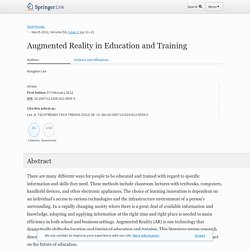
T. (1997). A survey of augmented reality. Sctgo proceedings low. Infodidact 2011. Shelton nh aug real. Ar edu. Augmented reality in education: teaching tool or passing trend? What some may call an 'unsurprising' 71% of 16 to 24-years-olds own smartphones, so why aren't teachers utilising these in the classroom or campus?
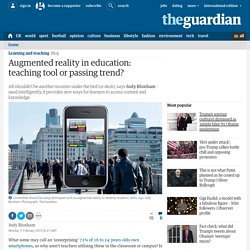
Is the use of these devices going to detract from the learning process or contribute to future workplace skills? Should teachers be using techniques such as augmented reality (AR) to engage students and develop their skills for the modern world? Well, I say 'yes'. 5 reasons to use Augmented Reality in Education - Augment News. By integrating augmented reality into your lectures, you’ll capture the attention of your audience.
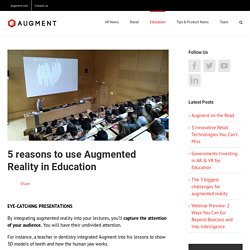
You will have their undivided attention. For instance, a teacher in dentistry integrated Augment into his lessons to show 3D models of teeth and how the human jaw works. Let your audience participate! Students are able to access models on their own devices via Augment’s app. By viewing augmented models, the students can gain a better understanding of the concepts they are studying.
Augmented Reality: A new way of augmented learning. Augmented learning is defined as an on-demand learning technique where the learning environment adapts to the needs and inputs from learners [1].
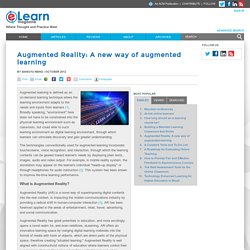
Broadly speaking, "environment" here does not have to be constrained into the physical learning environment such as classroom, but could refer to such learning environment as digital learning environment, through which learners can stimulate discovery and gain greater understanding. The technologies conventionally used for augmented learning incorporate touchscreens, voice recognition, and interaction, through which the learning contents can be geared toward learner's needs by displaying plain texts, images, audio and video output. Virtual Reality And Augmented Reality In Education - eLearning Industry. Battisti Gala Zomerfeld AR Language Learning.
Mathematics and geometry education with collaborative augmented reality. Interactive Media Systems Group, Vienna University of Technology, Favoritenstrasse 9-11/188, Vienna A-1040, Austria Available online 13 May 2003 Choose an option to locate/access this article:
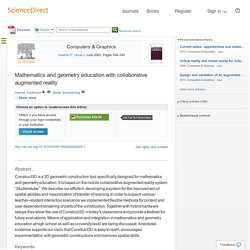
Using augmented reality and knowledge-building scaffolds to improve learning in a science museum. Allen, S. (2002).
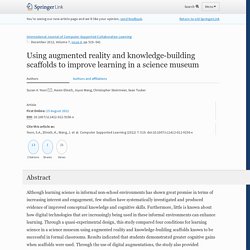
Looking for learning in visitor talk: A methodological exploration. In G. Leinhardt, K. Crowley, & K.